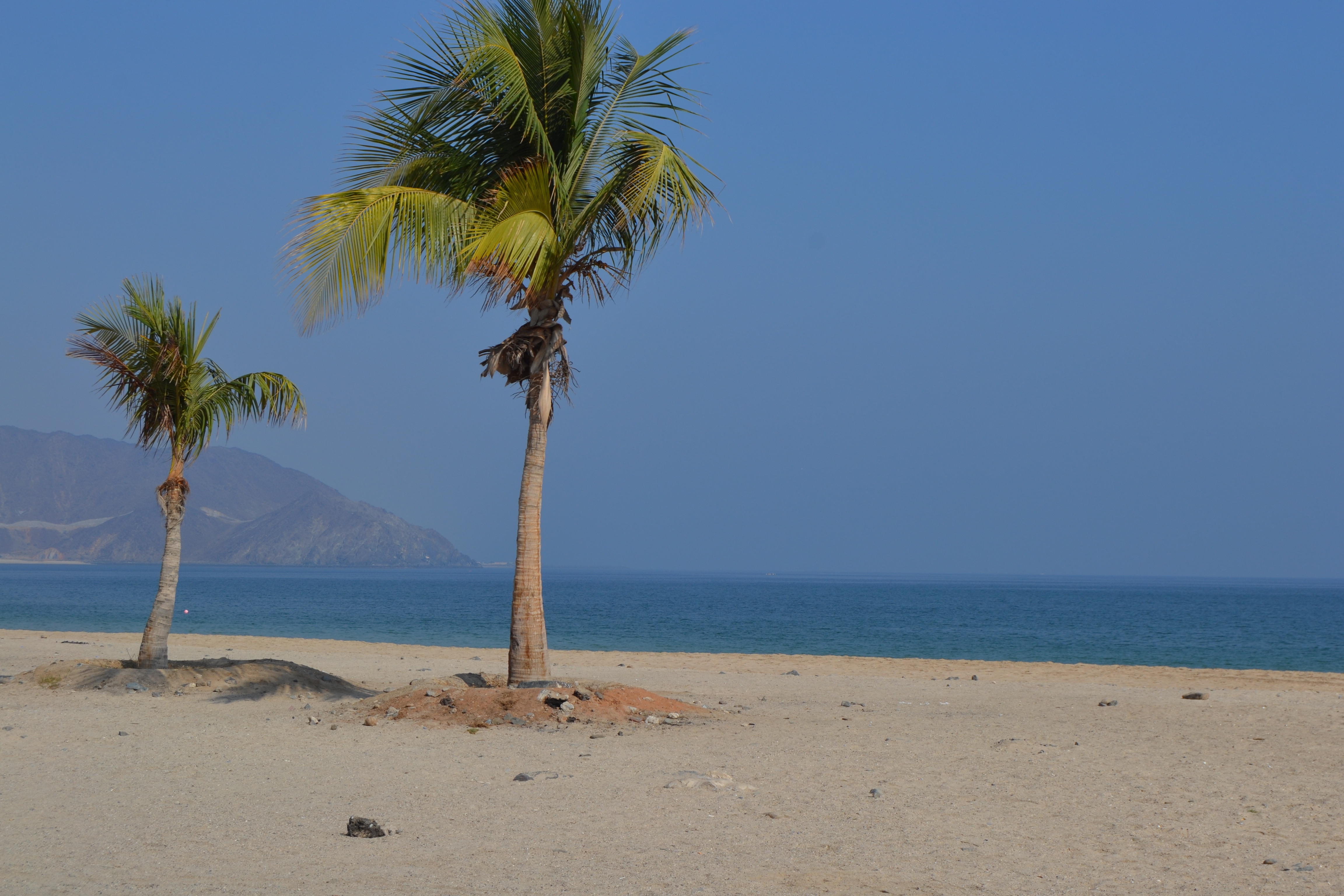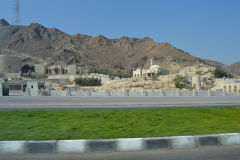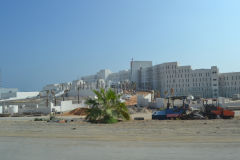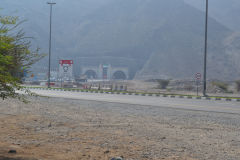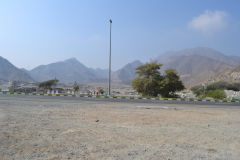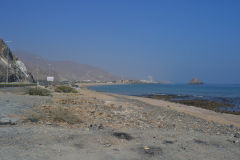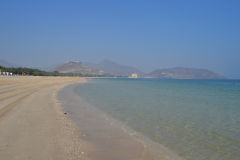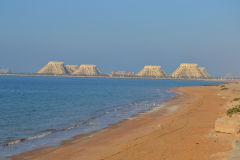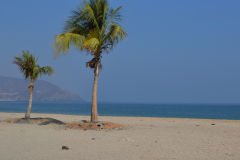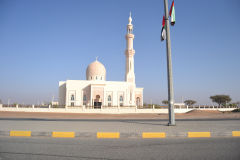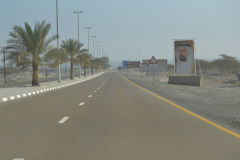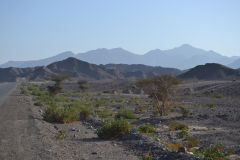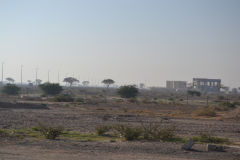The Al Hajar Mountains, also known as the Hajar Mountains, are a range of mountains located in the eastern part of the United Arab Emirates (UAE) and the northern part of Oman. They stretch for about 1,100 kilometers (680 miles) and are considered one of the most spectacular landscapes in the Arabian Peninsula.
The Al Hajar Mountains are primarily composed of limestone and are known for their rugged and steep terrain. The highest peak in the range is Jabal Shams, which stands at an altitude of 3,009 meters (9,871 feet) and is the highest mountain in the eastern Arabian Peninsula. The mountains are also home to a variety of plants and animals, many of which are unique to the region.
The Al Hajar Mountains have played a significant role in the history and culture of the region. They have been a natural barrier, separating the coast from the interior, and they have also been a source of resources such as water, wood and minerals. The mountains were also an important trade route, connecting the coast to the interior and the Gulf region to the Indian Ocean.
The Al Hajar Mountains have also been an important cultural and religious site for centuries. They are home to many ancient forts, castles, and tombs, and many of them are still standing today. The Al Hajar Mountains are also home to the historic town of Nizwa, which was once the capital of Oman and is now a UNESCO World Heritage Site.
Today, the Al Hajar Mountains are a popular destination for hikers and outdoor enthusiasts. The mountains offer a variety of hiking trails, ranging from easy to challenging, and they provide breathtaking views of the surrounding landscape. The mountains also offer a variety of activities such as rock climbing, paragliding, and hot air ballooning, which are becoming increasingly popular among adventure seekers.
The Al Hajar Mountains are a natural wonder in the eastern Arabian Peninsula, they are a spectacular landscape that offers a variety of outdoor activities. They also have played a significant role in the history and culture of the region, and it is a must-visit destination for anyone interested in history, culture, and outdoor activities.
History
The Al Hajar Mountains, also known as the Hajar Mountains, are a range of mountains located in the eastern part of the United Arab Emirates (UAE) and the northern part of Oman. They have a rich history dating back to ancient times, and have played an important role in shaping the culture and economy of the region.
The earliest known human settlement in the Al Hajar Mountains dates back to the 3rd millennium BCE. Archaeological evidence suggests that the mountains were home to several ancient civilizations, including the Bronze Age Dilmun civilization and the Iron Age Umm an-Nar culture. These ancient civilizations were known for their sophisticated irrigation systems and for their trade in copper, which was mined in the mountains.
During the Islamic period, the Al Hajar Mountains became an important center of trade and commerce. The mountains were a natural barrier that separated the coast from the interior and they controlled the trade routes between the Gulf region and the Indian Ocean. The mountain range was also home to several important towns and cities, such as Nizwa, which was once the capital of Oman and is now a UNESCO World Heritage Site.
In the 17th century, the Al Hajar Mountains became the center of an intense power struggle between the Omani empire and the neighboring Persian empire. The Omani empire was able to maintain control over the mountains, and they established a number of forts and castles in the region to protect their territory. These forts and castles are still standing today and are popular tourist attractions.
In the 20th century, the Al Hajar Mountains became an important source of oil and gas for the region. The discovery of oil and gas in the mountains led to a significant increase in the economic development of the region, and it also led to increased population growth and urbanization.
Today, the Al Hajar Mountains are a popular destination for hikers and outdoor enthusiasts. The mountains offer a variety of hiking trails, ranging from easy to challenging, and they provide breathtaking views of the surrounding landscape. The mountains also offer a variety of activities such as rock climbing, paragliding, and hot air ballooning, which are becoming increasingly popular among adventure seekers.
The Al Hajar Mountains have a rich history that spans thousands of years. From ancient civilizations to modern-day oil and gas production, the Al Hajar Mountains have played an important role in shaping the culture, economy, and history of the region. The mountains are also a popular destination for outdoor enthusiasts and history buffs, and they offer a glimpse into the past and present of the region.
Geology
The Al Hajar Mountains, located in the eastern part of the United Arab Emirates (UAE) and the northern part of Oman, are a range of mountains that have a unique and complex geology. The mountains, which are part of the Arabian-Nubian Shield, were formed millions of years ago as a result of tectonic activity and volcanic eruptions.
The Al Hajar Mountains are primarily composed of metamorphic rocks such as gneiss and schist, which were formed through the intense heat and pressure of tectonic activity. The mountains also contain a significant amount of granite, which is a type of igneous rock that formed from cooled and solidified magma or lava. The granite is believed to have formed during a period of volcanic activity that occurred in the region millions of years ago.
The Al Hajar Mountains also contain a variety of mineral deposits, including copper, gold, silver, and zinc. These mineral deposits were formed as a result of hydrothermal activity, which is the circulation of hot water through the rock. The mineral deposits have been mined for thousands of years and have played an important role in the economy of the region.
The mountains are also known for their unique landscapes, such as wadi, a valley formed by running water, particularly in the rainy season, and ophiolite, a rock formation that is created when oceanic crust is thrust onto continental crust, which can be found in the Al Hajar Mountain.
Over the course of millions of years, the Al Hajar Mountains have been shaped by a variety of geological processes, including tectonic activity, volcanic eruptions, and erosion. The mountains have also been shaped by the movement of the Earth’s crust, which caused the mountains to rise and fall. As a result, the Al Hajar Mountains have a unique and diverse geology that is not found in other parts of the region.
The Al Hajar Mountains have a unique and complex geology that was formed over millions of years as a result of tectonic activity, volcanic eruptions, and erosion. The mountains are composed of a variety of rock types, including metamorphic rocks and granite, and they contain valuable mineral deposits. The unique landscapes such as wadi and ophiolite, also add to the geological significance of the Al Hajar Mountains. The study of the geology of Al Hajar Mountains continues to be an area of interest for geologists and earth scientists.

